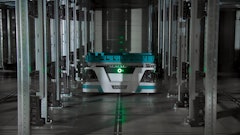
The skilled trades are all too familiar with the challenges of talent shortages and generational turnover, as 70% of employers report difficultly finding qualified workers. Many are tackling these issues head-on by investing in technology to get new employees up to speed quickly and strengthen the skills of experienced team members. These efforts are helping build a more resilient workforce to support the long-term growth of their businesses.
According to LinkedIn, 88% of global organizations say learning such as continued education, upskilling, and job shadowing, is their number-one strategy for improving retention. Regardless of industry, this approach can unlock new avenues for both employee and company growth, as companies benefit from more-informed staff and employees feel valued.
In the building materials industry, this staffing urgency has made tools like enterprise resource planning (ERP) systems and e-commerce platforms essential. By standardizing how work gets done and helping employees build new skills, they not only improve processes but also reduce strain on the workforce.
Onboarding employees of the future
As product information becomes more accessible online through e-commerce, buyers are arriving better informed. This raises the stakes for frontline employees, who must now deliver more strategic, consultative service. To meet these expectations, companies must ensure employees are trained quickly and effectively, with a strong onboarding foundation.
Technology-enabled onboarding, such as video training, helps new employees learn faster as it is more engaging and easier to retain than written information. Videos can easily flex to one’s training schedule and be made available for employees to refresh their knowledge.
Every employee should also be equipped with up-to-date standard operating procedures (SOPs) for their role for consistency and clarity. These ensure accountability by setting defined expectations and measurable results from day one. Over time they can be refined, and organizations can redistribute responsibilities from roles with high turnover or low performance.
Implementing an ERP system adds another layer of structure, helping teams work from a single source of truth, tracking their onboarding materials, and reducing dependency on siloed tribal knowledge. One lumber and home building material franchise, for instance, faced onboarding challenges because only veteran staff could use its outdated legacy system. After adopting a modern ERP platform, the company eliminated training barriers, improved inventory processes, and significantly shortened onboarding time, saving an estimated 20–40 hours per new hire.
Leveling up the workforce
Once employees are onboarded, ongoing development becomes critical. Corporate leaders are prioritizing career development, with 71% offering leadership training and over half having formal growth plans. In the skilled trades, this presents an opportunity to follow suit and build up future leaders from within, strengthening their soft and hard skills.
High-potential employees should be given opportunities to develop leadership and management capabilities, as well as critical thinking and communication skills. Advanced training in data analytics and business strategy can further help employees contribute directly to business decision making. Virtual courses, online learning platforms, and workshops can enable faster proficiency and boost their ability to take on different tasks.
Employees should be encouraged to shadow experienced operators, cross-train on equipment they don’t typically operate, and where possible, given funding to attain additional certifications. Formal mentorship programs can help build confidence among new hires and can extend over their tenure to drive long-term growth.
Supercharging with technology
Modern software, whether ERP or e-commerce, can offload repetitive work from employees to systems, or even directly to the customer. Today’s digital-native buyers prefer to self-serve, not just for speed but for convenience and autonomy. This creates a natural synergy, as e-commerce platforms can meet self-service expectations while reducing workload on stretched teams.
Tightly integrating industry specific B2B e-commerce solutions with inventory, purchasing, accounting, point-of-sale, and ERP systems increases automation, supports accuracy, and streamlines the buyer journey creating a powerful efficiency engine for business and customer alike.
This creates opportunities for employees to shift toward higher-value tasks, such as quoting complex jobs, offering consultative advice, or resolving exceptions. E-commerce can also serve as a real-time training environment by equipping new hires with product knowledge and workflows while allowing experienced staff to focus on more meaningful work.
A modern workforce for modern demands
Success today requires investing in both digital tools and workforce upskilling, enabling employees to grow into new roles, and reducing employee turnover, especially for SMBs competing for talent.
E-commerce adoption alleviates pressure on understaffed teams, improves accuracy, and enhances employee satisfaction. When paired, technology and talent investment future-proof the business, enabling companies to serve more informed customers with more agile and confident teams.




















